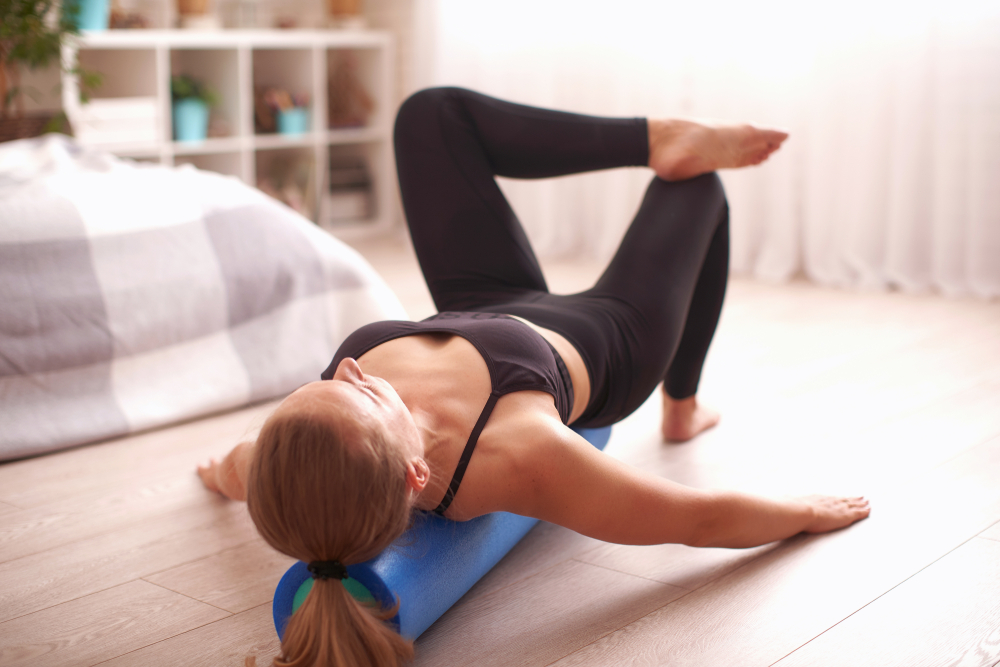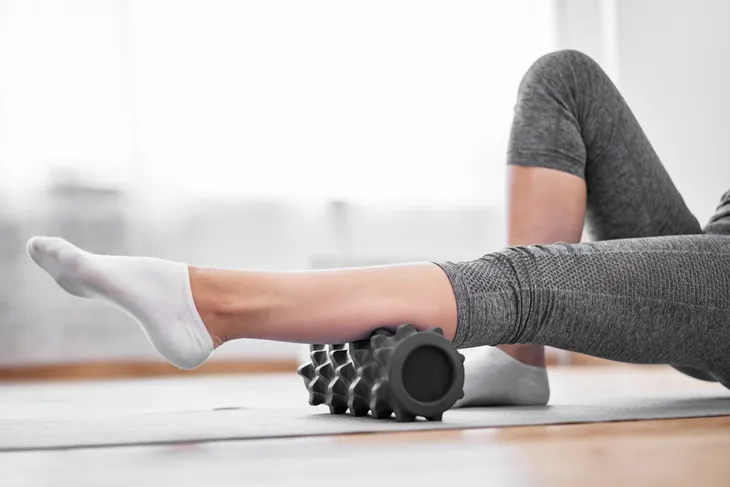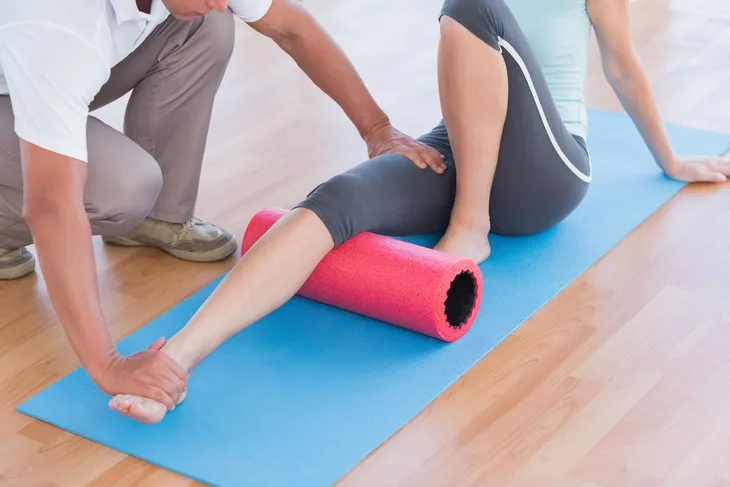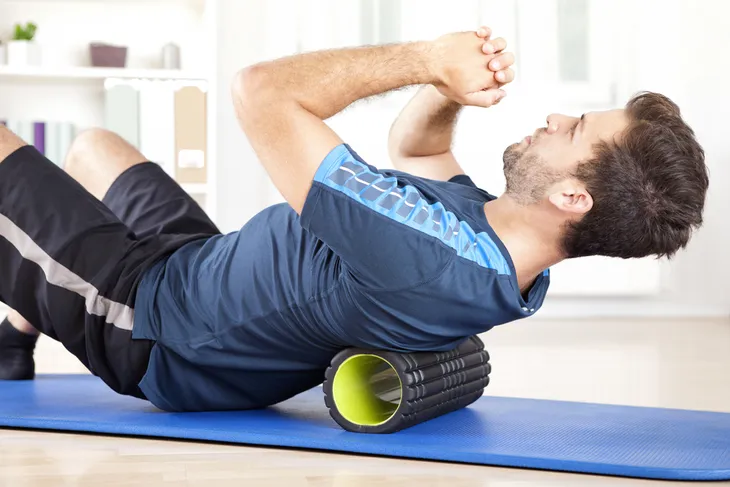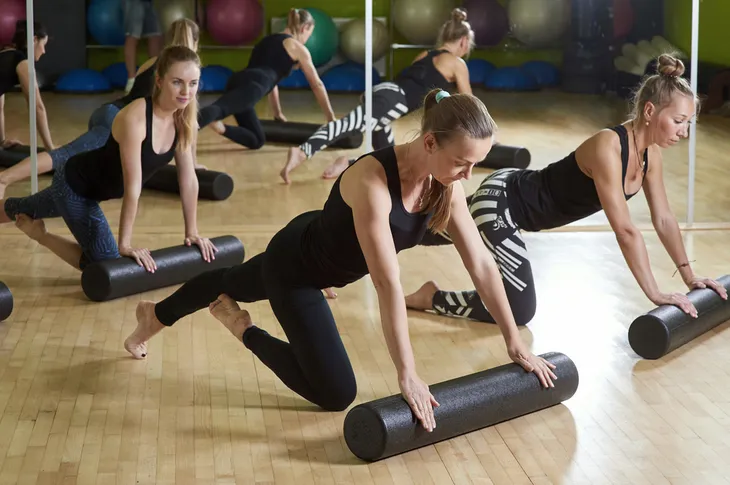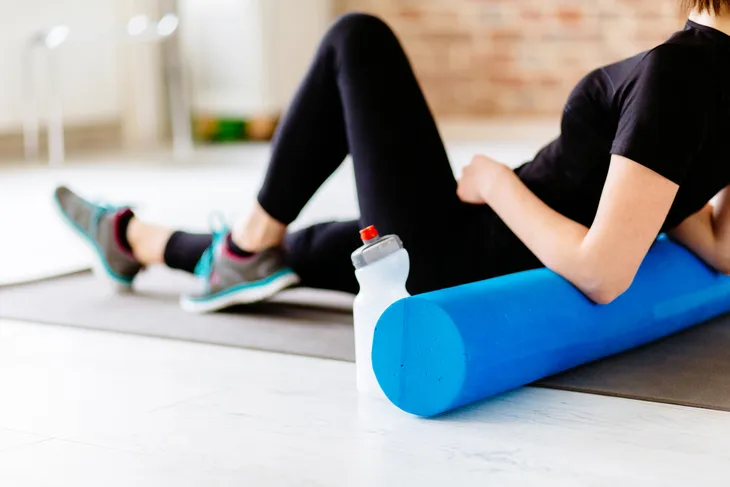You might have heard a coworker talking about the benefits of using a foam roller. Or maybe you saw a guy at your gym using a foam roller before and after a workout and wondered what they’re exactly good for?
Using a foam roller, massages out your muscles and tendons, breaking down the tight knots of fascia, loosening up soft tissue adhesions and scar tissue, and encouraging fresh blood flow and circulation to your muscles for faster recovery time.
Here are eight benefits to using a foam roller every day…
Stretch Pre-Workout
The first way you can utilize a foam roller is to roll before your workouts. This “pre-stretch” will warm up and loosen any tight tendons, ligaments, and muscles to prevent an injury. Foam rollers are particularly useful for runners or anyone who is prone to developing a repetitive stress injury from reoccurring strenuous exercise or movement (i.e., even sitting at a desk).
Self-Massage Post-Workout
While a foam roller can’t take the place of a professional massage therapist, it’s a tool that can be used after a workout to provide a self-myofascial release, which is somewhat similar to the style of low load, long duration, dragging soft tissue massage that a sports therapist might apply. The self-massage of a foam roller will literally “release” muscle tissue and encourage mobility.
Cost Benefits
As you can probably understand, a foam roller is commonly referred to a poor man or woman’s massage. And while a foam roller may not be able to completely take the place of a professional massage therapist, it can provide a pre- and post workout massage for a fraction of the cost. For example, I purchased my foam roller for roughly $35. Now I can reserve professional massage (at $85 per hour) for when I really need it.
Prevents Injury
The most obvious benefit of using a foam roller is to prevent injury due to repetitive forms of exercise and inadequate stretching. For example, running can often cause painful IT band injuries—either flare-ups, muscle tightness, or IT band syndrome—on the thin, fascia-prone band of muscle. However, regular foam rolling in this area will loosen and strengthen to prevent damage.
Increased Blood Circulation
Stretching thoroughly with a foam roller, like exercise, will encourage increased blood flow throughout the entire body—creating better muscle and joint mobility and range of motion, better elimination of toxins and waste, faster recovery time following strenuous exercise, and less chance of injury.
Encourages Greater Flexibility
One of the best ways to prevent an exercise-related injury is to build up body flexibility. This can be done through a series of stretches using a foam roller as well as through restorative-style yoga postures. As your body gains flexibility, areas prone to injury (i.e., IT band, hips, lower back, and calves) will become longer, leaner, and stronger.
Faster Recovery Time
A foam roller promotes two very important aspects for the athlete—better range of motion and increased blood flow to muscles and joints—both lead to faster recovery time following workouts and the ability to perform more quality, strenuous exercises so you can reach your goals more quickly and with greater success.
Calms Stress
A foam roller isn’t only meant for pre- and post-exercise. I use my foam roller when I’m feeling stressed from sitting at my desk all day, when I’ve had a awkward sleep, and even after long drives. You wouldn’t believe how the anxiety in your body and mind melts away as you gently drag out knots and release tension in tight connective muscle tissues.
